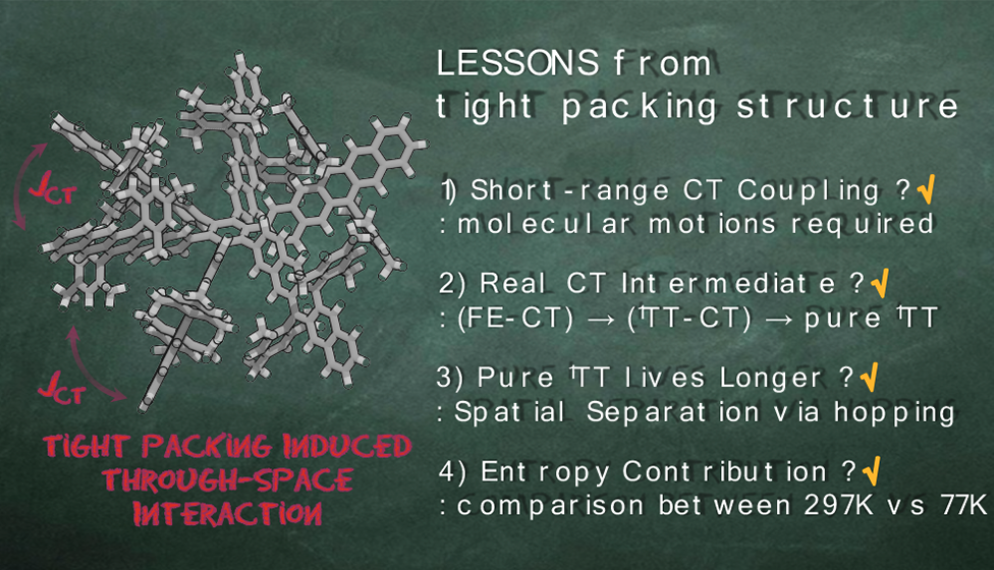Leveraging Charge-Transfer Interactions in Through-Space-Coupled Pentacene Dendritic Oligomer for Singlet Exciton Fission
- 글번호
- 377604
- 작성일
- 2023-11-23
- 수정일
- 2023-11-24
- 작성자
- 화학과
- 조회수
- 1078
- 지도교수: 김형준 (qclab.weebly.com)
- 참여학생: Yim Daniel (박사과정)
- 공동연구자: 연세대학교 김동호 교수님, National University of Singapore Chunyan Chi 교수님
- Journal of the American Chemical Society, 145, 36, 19812 (https://doi.org/10.1021/jacs.3c05660)
Singlet exciton fission in organic chromophores has received much attention during the past decade. Inspired by numerous spectroscopic studies in the solid state, there have been vigorous efforts to study singlet exciton fission dynamics in covalently bonded oligomers, which aims to investigate underlying mechanisms of this intriguing process in simplified model systems. In terms of through-space orbital interactions, however, most of covalently bonded pentacene oligomers studied so far fall into weakly interacting systems since they manifest chain-like structures based on various (non)conjugated linkers. Therefore, it remains as a compelling question to answer how through-space interactions in the solid state intervene this photophysical process since it is hypersensitive to displacements and orientations between neighboring chromophores. Herein, as one of experimental studies to answer this question, we introduced a tight-packing dendritic structure whose mesityl-pentacene constituents are coupled via moderate through-space orbital interactions. Based on the comparison with a suitably controlled dendritic structure, which is in a weak coupling regime, important mechanistic viewpoints are tackled such as configurational mixings between singlet, charge-transfer, and triplet pair states and the role of chromophore multiplication. We underscore that our through-space-coupled dendritic oligomer in a quasi-intermediate coupling regime provides a hint on the interplay of multiconfigurational excited-states, which might have drawn complexity in singlet exciton fission kinetics throughout numerous solid-state morphologies.

- 첨부파일
- 첨부파일이(가) 없습니다.